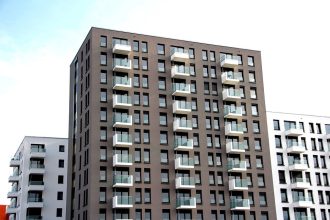Green building design is rapidly gaining traction worldwide as an innovative approach that addresses environmental concerns, enhances occupant health, and improves overall efficiency in the real estate sector. The principles of green building extend beyond mere energy efficiency; they incorporate resource conservation, waste reduction, and a holistic understanding of the built environment. This post outlines the essential principles of green building design, innovative practices in the field, and references the Living Building Challenge, a leading framework for sustainable construction.
Key Principles of Green Building Design
1. Sustainable Site Selection
The selection of the building site plays a critical role in its environmental impact. Sustainable site selection considers factors such as:
- Proximity to Infrastructure: Choosing locations near public transport, schools, and essential services reduces reliance on vehicles.
- Minimizing Land Disturbance: Building on previously developed sites or brownfields reduces environmental harm and preserves natural habitats.
2. Resource Efficiency
Resource efficiency is at the heart of green building design. This involves:
- Material Selection: Utilizing renewable, salvaged, or locally sourced materials reduces the carbon footprint associated with transportation and manufacturing. The use of recycled materials is also encouraged.
- Water Efficiency: Implementing rainwater harvesting systems, graywater recycling, and fixtures that reduce water consumption fosters resource conservation.
3. Energy Efficiency
Reducing energy consumption is paramount for achieving sustainability. Innovative practices include:
- Passive Design Strategies: These include proper orientation, natural ventilation, and high-performance insulation that reduce the need for mechanical heating and cooling.
- Renewable Energy Integration: Incorporating solar panels, wind turbines, and geothermal systems can make buildings energy-neutral or even energy-positive.
4. Indoor Environmental Quality (IEQ)
A building’s design must foster the health and well-being of its occupants. Considerations for promoting IEQ include:
- Natural Lighting: Maximizing daylight through the strategic placement of windows can enhance mood and productivity.
- Non-Toxic Materials: Choosing low-emitting materials and finishes reduces indoor pollutants and improves air quality.
5. Community and Solutions
Green building design should not exist in a vacuum. It should focus on creating a lasting positive impact on the community through:
- Community Engagement: Involving local communities in the design process can lead to more relevant and accepted solutions.
- Mixed-Use Development: Creating spaces that blend residential, commercial, and recreational facilities promotes a vibrant community and reduces dependence on vehicles.
Innovative Practices in Green Building Design
1. The Living Building Challenge
The Living Building Challenge (LBC) represents one of the most rigorous sustainable design certifications available. Established by the International Living Future Institute, the LBC goes beyond traditional green building standards by requiring projects to meet specific performance requirements over 12 months of occupancy.
Core Principles of LBC:
- Place: Projects must be sited in a way that enhances the surrounding ecosystem.
- Water: Buildings must be self-sufficient regarding water needs, employing systems such as rainwater harvesting and greywater recycling.
- Energy: Projects must generate more energy than they consume on an annual basis, promoting renewable sources such as solar or wind.
- Materials: The use of healthy, non-toxic materials is crucial, prohibiting substances like PVC and formaldehyde.
- Equity: LBC emphasizes social equity and enterprise, promoting inclusive practices within the community.
2. Biophilic Design
Biophilic design seeks to connect inhabitants with nature through architectural features that mimic natural environments. Innovative practices include:
- Living Walls: Vertical gardens not only enhance aesthetics but also improve air quality and promote the mental well-being of occupants.
- Natural Elements: The incorporation of natural materials, water features, and vegetation within the building enhances occupant connection to nature.
3. Modular and Prefabricated Construction
Modular construction involves assembling building components in a factory setting before transporting them to the site for quick assembly. This approach can significantly reduce waste and lower transportation emissions while improving quality control.
Examples include:
- Factory-Controlled Environment: Reduces waste and allows for improved precision in construction.
- Rapid Assembly: Enhances project timelines and reduces impacts on the site.
Conclusion
The shift towards green building design and sustainable real estate development represents a crucial step towards addressing climate change and enhancing the well-being of communities. By adhering to principles such as sustainable site selection, resource efficiency, energy efficiency, and indoor environmental quality, builders and developers can create structures that minimize their ecological footprint and foster healthier living environments.
Innovative practices, exemplified by initiatives like the Living Building Challenge and the adoption of biophilic design, are leading the way toward a more resilient and sustainable built environment. As stakeholders across the industry continue to embrace these strategies, the future of construction holds promise for creating not just buildings, but thriving ecosystems that benefit both the planet and its inhabitants.
References
- International Living Future Institute. (n.d.). Living Building Challenge. https://living-future.org/lbc/
- U.S. Green Building Council. (n.d.). LEED – Leadership in Energy and Environmental Design. https://www.usgbc.org/leed
- Kellert, S. R., & Calabrese, E. (2015). Integrative Design: The Biophilic Approach. Yale University Press.







